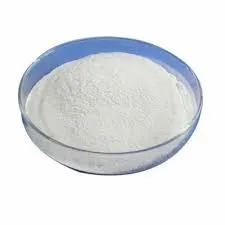
Dec . 04, 2024 11:53 Back to list
Exploring the Applications and Benefits of Hydroxy Methyl Propyl Cellulose in Various Industries
Understanding Hydroxypropyl Methylcellulose (HPMC) Properties, Applications, and Benefits
Hydroxypropyl Methylcellulose (HPMC) is a versatile and widely used cellulose derivative that has gained prominence in various industries due to its unique properties and beneficial applications. With a chemical composition that includes hydroxypropyl and methyl groups, HPMC plays a crucial role in forming gels, enhancing viscosity, and acting as a stabilizing agent, making it an essential ingredient in pharmaceuticals, cosmetics, food, construction, and more.
Chemical Structure and Properties
HPMC is a non-ionic cellulose ether synthesized from natural cellulose, which is treated with propylene oxide and methyl chloride. This chemical modification imparts several favorable properties to HPMC. Its hydrophilic nature allows it to dissolve in water, forming clear and viscous solutions. The degree of substitution, which refers to the number of hydroxyl groups replaced by hydroxypropyl and methyl groups, determines its solubility, viscosity, and other functional properties.
One of the most notable characteristics of HPMC is its ability to form gels upon heating and cooling, which is particularly useful in pharmaceuticals and food applications. Depending on the formulation, it can be used as a thickening agent, emulsifier, film-forming agent, or protective colloid. Furthermore, HPMC is stable across a wide pH range and does not support microbial growth, making it an ideal choice for a variety of formulations.
Applications of HPMC
1. Pharmaceuticals HPMC is widely utilized in the pharmaceutical industry, especially in the formulation of controlled-release tablets and capsules. It acts as a binder, filler, and coating agent. Due to its gel-forming abilities, it effectively controls the release of active ingredients, ensuring a sustained therapeutic effect. Additionally, HPMC is used in ophthalmic formulations as a lubricant to alleviate dry eye symptoms.
2. Food Industry In the food sector, HPMC serves multiple functions, including acting as a thickener, stabilizer, and emulsifier. It is commonly found in sauces, dressings, ice creams, and bakery products. Its ability to retain moisture and improve texture makes it a popular ingredient for enhancing the quality and shelf life of food products.
hydroxy methyl propyl cellulose

3. Cosmetics and Personal Care HPMC is a valuable ingredient in cosmetics and personal care products due to its thickening and film-forming properties. It is used in lotions, creams, shampoos, and other formulations to improve consistency and provide a smooth application. Additionally, it helps in suspending solid particles, thus enhancing the overall texture of cosmetic products.
4. Construction In the construction industry, HPMC is used as an additive in cement and plaster formulations. It enhances workability, improves adhesion, and helps in retaining water during the curing process. This leads to stronger, more durable building materials, making HPMC a vital component in modern construction practices.
Benefits of HPMC
The advantages of using HPMC across different industries are manifold. Its non-toxic, biodegradable nature makes it an environmentally friendly choice. Additionally, HPMC is generally regarded as safe by regulatory authorities, allowing its widespread use in food and pharmaceutical applications. The versatility in formulation and functional properties makes HPMC an indispensable ingredient, providing manufacturers with enhanced performance and quality.
Furthermore, HPMC's ability to form gels without requiring the addition of heat simplifies production processes and reduces energy consumption. This efficiency contributes to cost-effectiveness while maintaining high product quality.
Conclusion
Hydroxypropyl Methylcellulose (HPMC) is a remarkable cellulose derivative that finds extensive applications across various industries. Its unique properties, including gel formation, thickening, and emulsifying capabilities, make it an essential ingredient in pharmaceuticals, food, cosmetics, and construction. As researchers continue to discover new applications and refine its properties, HPMC is poised to remain a crucial element in innovative formulations, promoting efficiency and quality in diverse sectors. The future of HPMC appears promising, supporting advancements in technology while aligning with the growing demand for sustainable and safe materials.
-
Versatile Hpmc Uses in Different Industries
NewsJun.19,2025
-
Redispersible Powder's Role in Enhancing Durability of Construction Products
NewsJun.19,2025
-
Hydroxyethyl Cellulose Applications Driving Green Industrial Processes
NewsJun.19,2025
-
Exploring Different Redispersible Polymer Powder
NewsJun.19,2025
-
Choosing the Right Mortar Bonding Agent
NewsJun.19,2025
-
Applications and Significance of China Hpmc in Modern Industries
NewsJun.19,2025







